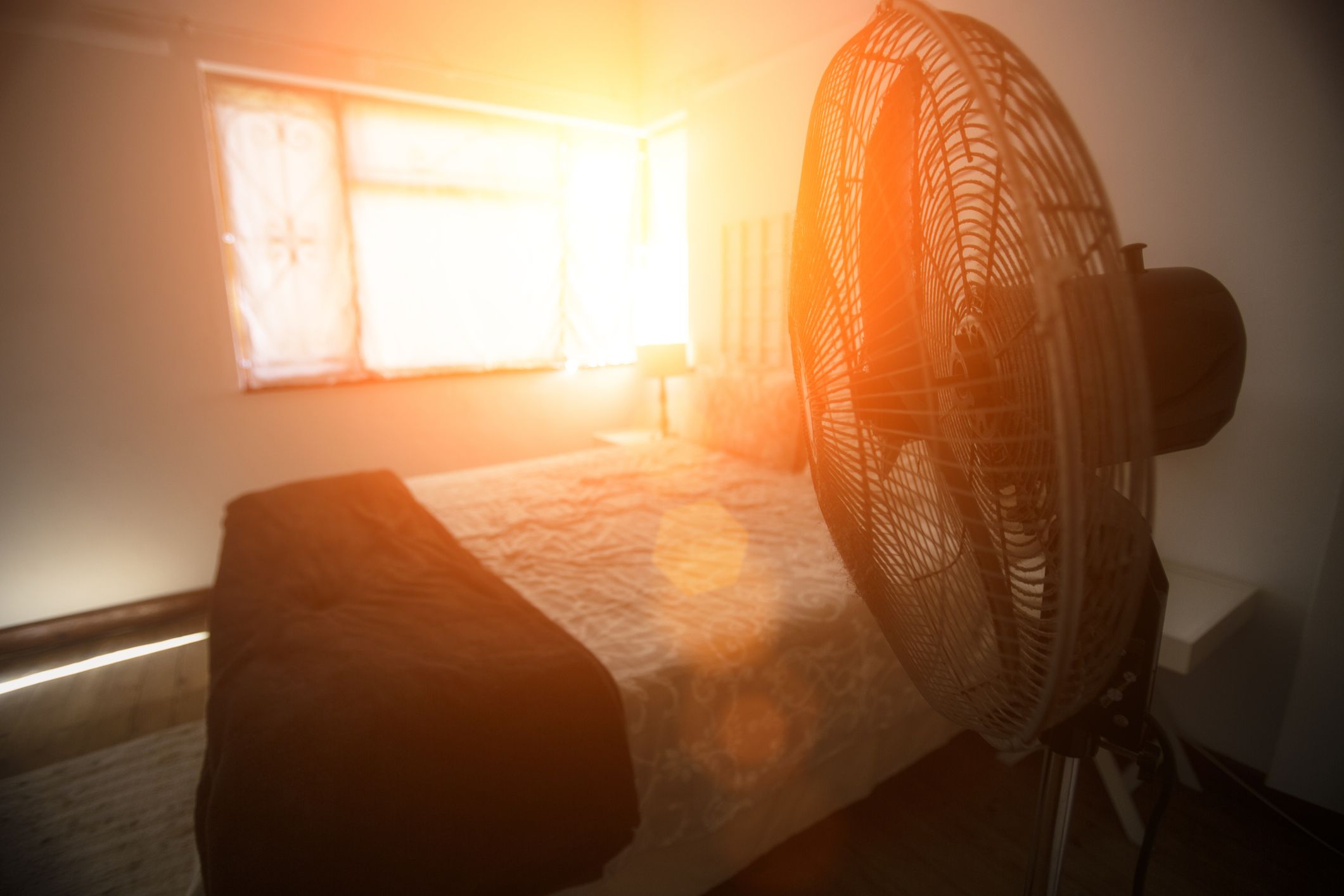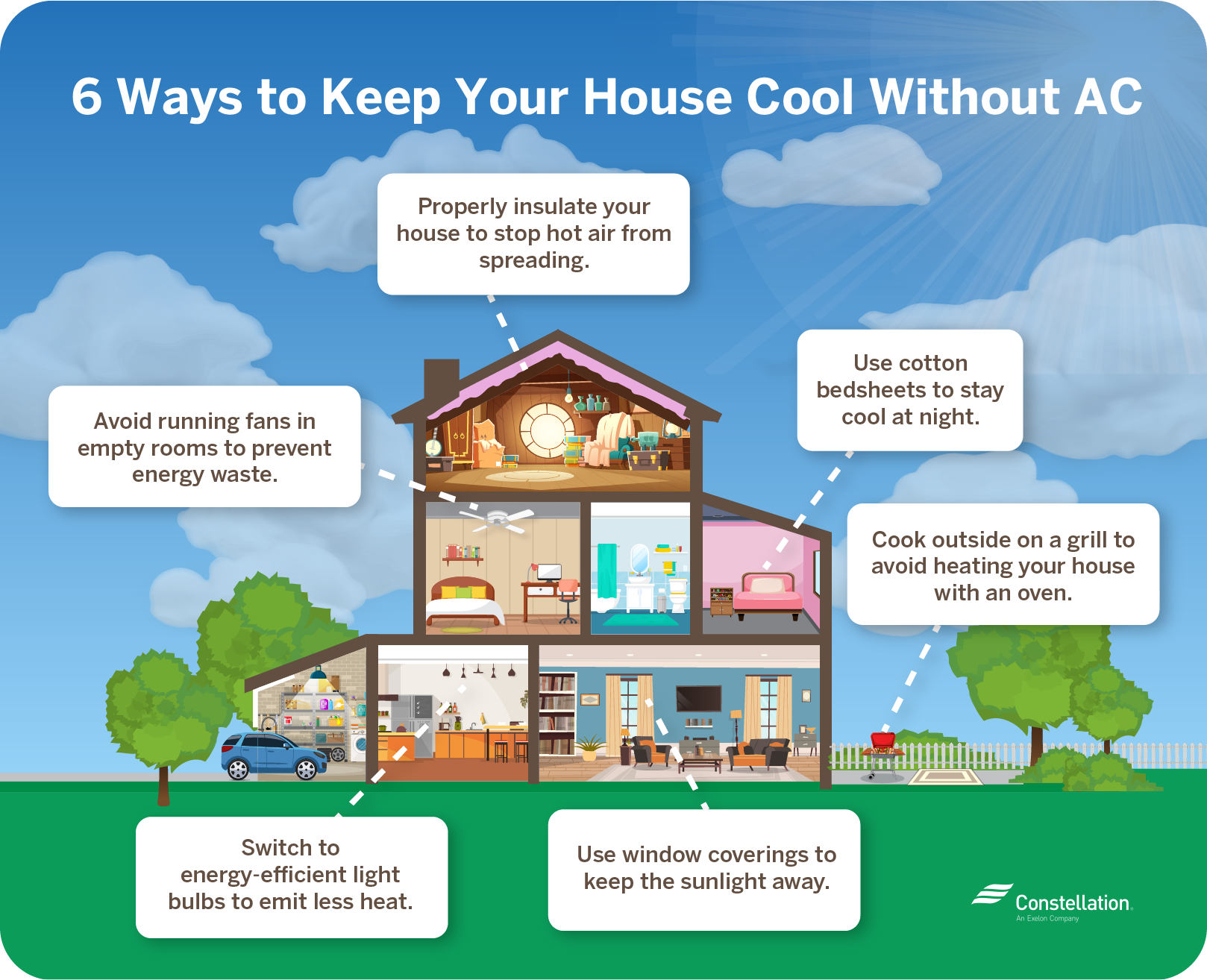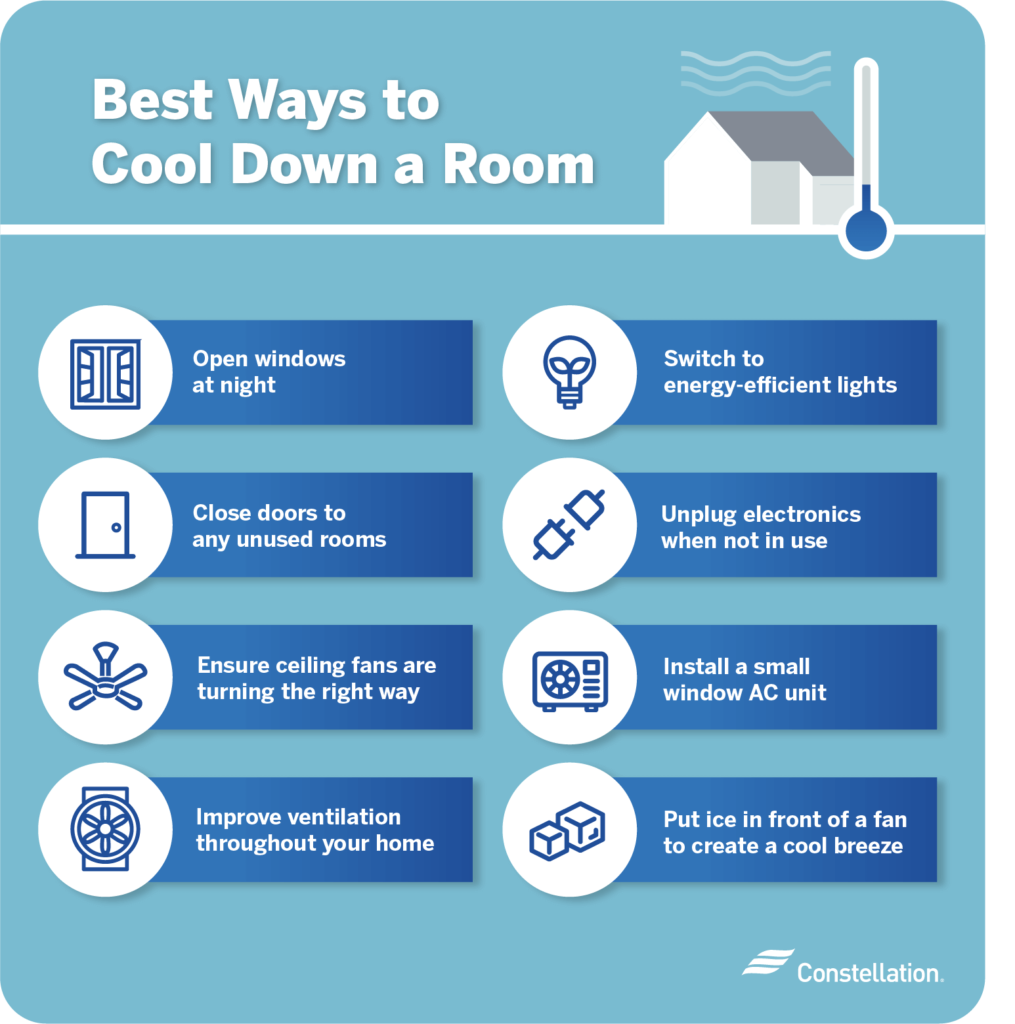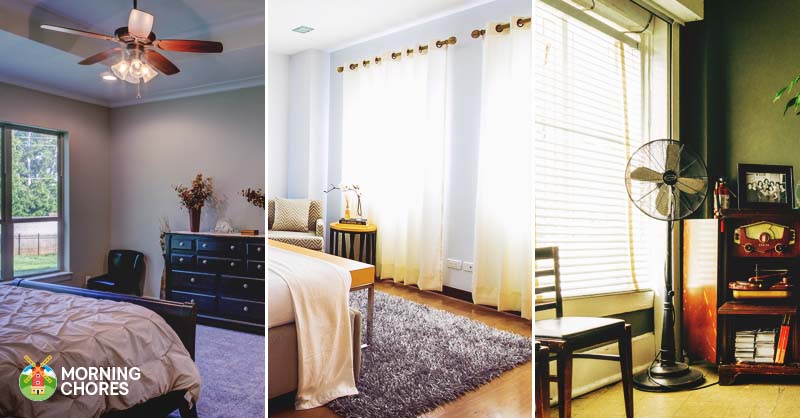How To Cool Bedroom Without Ac

As summer temperatures soar, many find themselves seeking refuge from the heat, particularly in the bedroom where sleep is essential. But what if air conditioning isn't an option, or you're looking to reduce your energy consumption? Staying cool without AC requires a combination of strategic adjustments and a bit of resourcefulness.
This article explores practical and effective methods to lower bedroom temperatures without relying on traditional air conditioning units. It focuses on readily available techniques and tools that can significantly improve comfort during hot weather.
Understanding the Challenge
The goal is to minimize heat gain and maximize heat dissipation. Heat gain primarily occurs through windows, walls, and the roof, while heat dissipation involves allowing the body to release heat effectively.
Addressing both these aspects is key to creating a cooler sleeping environment. This involves understanding how heat moves and what simple steps can be taken to disrupt that process.
Blocking Incoming Heat
One of the most effective ways to cool a bedroom is to prevent heat from entering in the first place. Windows are a major source of heat gain, especially those facing east or west.
Using blackout curtains or blinds can significantly reduce the amount of sunlight and heat that enters the room. According to the U.S. Department of Energy, these window treatments can reduce heat gain by up to 33%.
Closing curtains during the day, especially during peak sunlight hours, can make a noticeable difference. Reflective window film is another option, bouncing sunlight away from the window's surface.
Beyond windows, ensuring proper insulation in walls and attics can also help to keep heat out. While a larger project, it provides long-term benefits.
Maximizing Airflow and Ventilation
Good ventilation is crucial for dissipating heat. Opening windows strategically can create a natural airflow that cools the room.
Open windows on opposite sides of the room to create a cross breeze. The effectiveness of this method depends on the direction and strength of the wind.
Fans can also play a vital role in improving airflow. A ceiling fan, if available, can circulate air and create a cooling effect.
Position box fans to exhaust hot air out of the room. Pointing a fan out a window can draw cool air in from other parts of the house or outside, creating a mini-ventilation system.
According to a report by the American Society of Heating, Refrigerating and Air-Conditioning Engineers (ASHRAE), even a slight increase in air movement can improve thermal comfort significantly.
Harnessing the Power of Water
Water can be used in several ways to cool a bedroom. A simple trick is to place a bowl of ice water in front of a fan.
As the fan blows air across the ice, it picks up moisture and cools the air, creating a makeshift air conditioner. This method is particularly effective in small rooms.
Taking a cool shower or bath before bed can also lower your body temperature. Evaporation of water from the skin has a cooling effect.
Additionally, using a damp cloth on your forehead or neck can provide temporary relief from the heat. The cooling effect from evaporation helps to regulate body temperature.
Making Bedding Adjustments
The type of bedding you use can also impact your comfort level. Opt for lightweight, breathable fabrics like cotton or linen.
These materials allow for better airflow and wick away moisture, keeping you cooler during the night. Avoid heavy blankets or synthetic fabrics that trap heat.
Consider using a cooling mattress pad or pillow. These products are designed to dissipate heat and keep you cool throughout the night.
Reducing Internal Heat Sources
Electronic devices generate heat. Turn off and unplug unnecessary appliances and electronics in the bedroom.
Laptops, televisions, and lamps can all contribute to the overall heat in the room. Minimize their use, especially in the hours leading up to bedtime.
Switch to energy-efficient light bulbs, such as LEDs, which produce less heat than traditional incandescent bulbs. Reducing internal heat sources can have a surprisingly significant impact.
Lifestyle Changes
Staying hydrated is crucial for regulating body temperature. Drink plenty of water throughout the day.
Avoid strenuous activities, especially during the hottest part of the day. Opt for light exercises or relaxing activities that won't raise your body temperature.
Eating smaller, lighter meals can also help. Heavy meals require more energy to digest, which can increase body heat.
Community Resources and Support
During extreme heat events, some communities offer cooling centers. These are public spaces, such as libraries or community centers, where people can seek refuge from the heat.
Contact your local health department or emergency management agency to find the location of cooling centers in your area. Taking advantage of these resources can provide essential relief during heat waves.
Conclusion
While air conditioning offers immediate relief, it's not always a practical or sustainable solution. By implementing these strategies, you can significantly reduce the temperature in your bedroom and improve your sleep quality during hot weather.
Combining heat-blocking measures, enhanced ventilation, and smart lifestyle choices can create a comfortable and cool sleeping environment, without the reliance on AC. Staying cool without AC is achievable with a bit of planning and proactive adjustments.


















